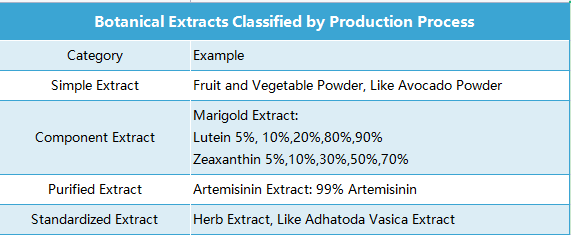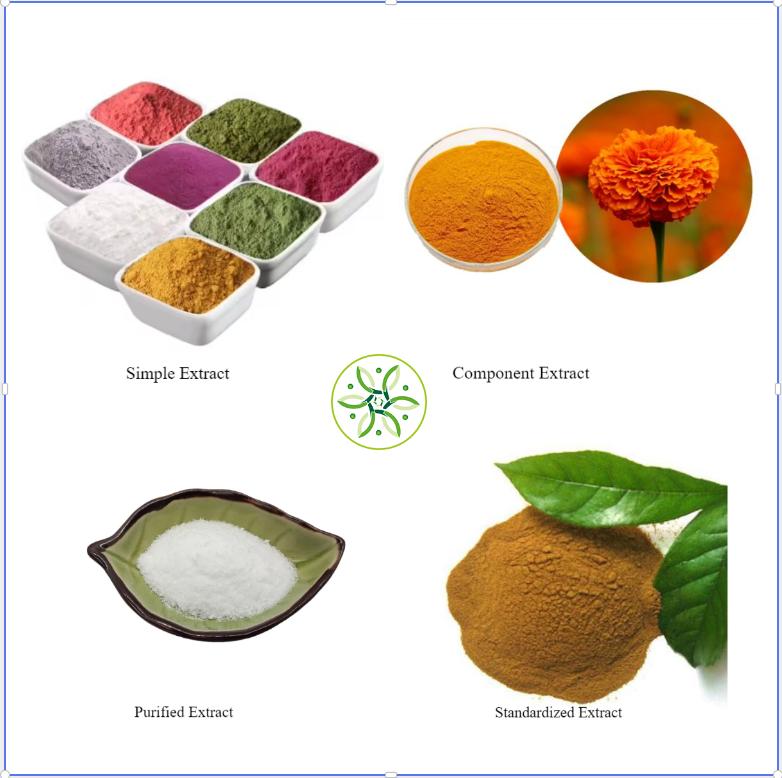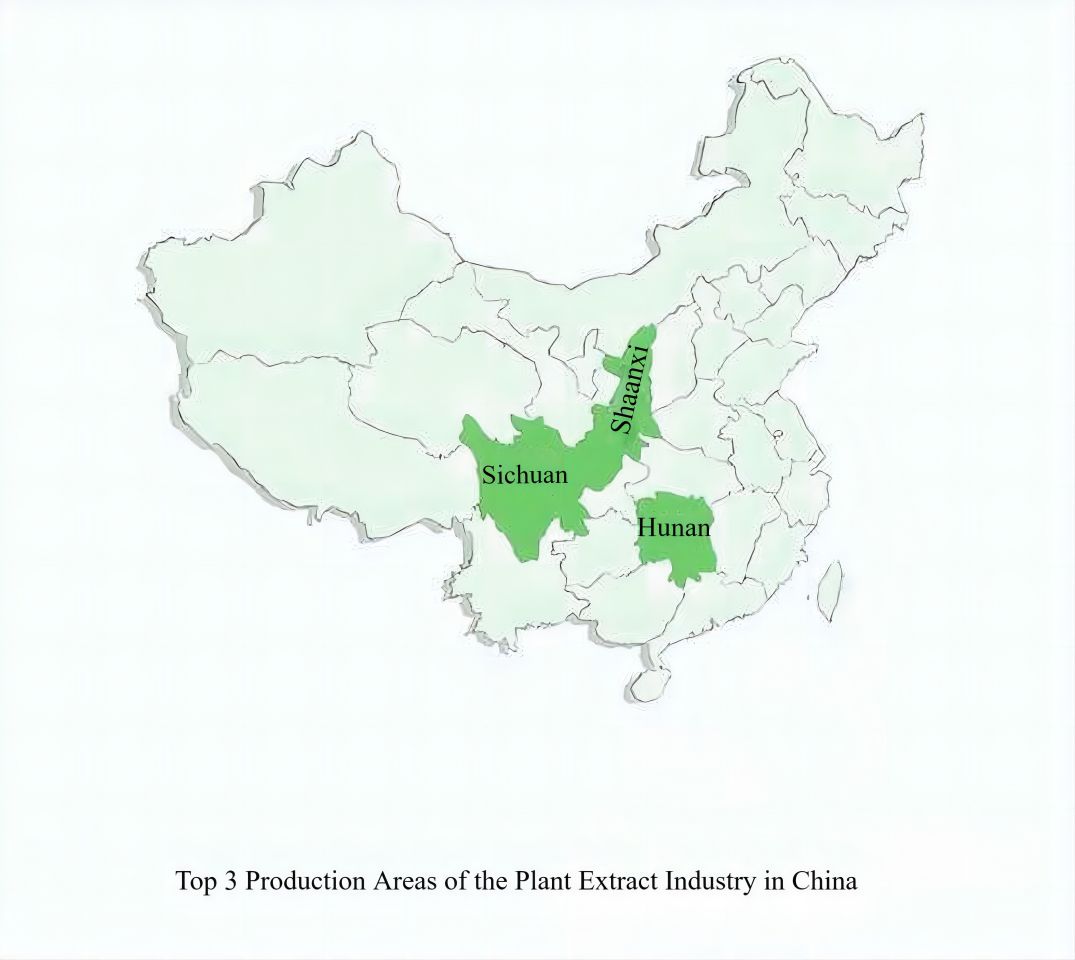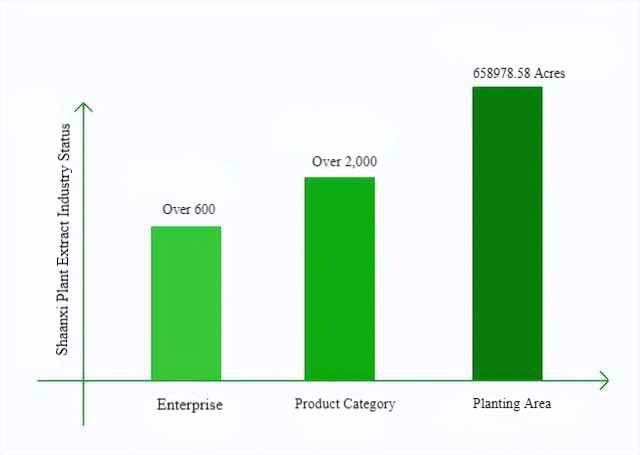5 Things You Must Know About Botanical Extracts Meaning
For botanical extracts, you may are still very unfamiliar with this term. In fact, there are many aspects of our lives that have already been applied to botanical extracts. Below are the 5 things you must know about botanical extracts meaning.
What Is the Meaning of Botanical Extracts?
Botanical extracts, also reffed as plant extracts. The meaning of botanical extract is a product formed by extracting, concentrating, drying, and/or separating all or a part of a plant as raw material, and directionally obtaining and concentrating one or more components from the plant, generally without changing the structural characteristics of the original components of the plant. The product can be in solid, liquid, and semi solid forms, and can be made into powder or granular form with good flowability and moisture resistance by adding excipients.
What Are the Classifications of Botanical Extracts?

Botanical extracts can be divided into simple extracts, component extracts, purified extracts, and standardized extracts based on their production process.
Simple Extract: A product obtained from plants that have been extracted, concentrated, and/or dried without separation or purification, and quantified for quality control using quality indicators. It can also be referred to as “Crude Extract”,” Ratio Extract”, or” Full Extract”.
Component Extract: A mixture of effective components obtained from plants through extraction, separation, and/or purification, and quantifiable quality control labeling of the effective components using class components or multiple active components. The indicated content range can generally be adjusted by mixing different batches of extracts, also known as "quantified extract".
Purified Extract: A single component product obtained from plants through extraction, separation, and purification processes. The content of a single component should account for more than 90% (on a dry basis) of the extract.
Standardized Extract: A plant extract that contains effective ingredients that can be identified and quantitatively controlled. The planting and harvesting of its raw materials, as well as the initial processing, production process, and quality control of its origin all have standard requirements. The range of labeled ingredient content can be achieved by mixing different batches of extracts or adjusting with inactive excipients. Simple extracts, component extracts, and purified extracts can also be classified as standardized extracts if they meet this condition.

What Are the Benefits of Botanical Extracts?
(1) Antioxidant Effects of Botanical Extracts
The antioxidant effect of botanical extracts is mainly achieved by directly clearing or inhibiting free radicals in the body and enhancing the activity of antioxidant enzymes, thereby enhancing the body's antioxidant capacity. Research has found that adding oregano essential oil to the diet can significantly improve the antioxidant capacity of rabbits. Research reports suggest that plant polyphenols can increase the activity of antioxidant enzymes in the blood of weaned piglets and reduce the concentration of malondialdehyde. Research has shown that 1.0% and 2.0% plant extracts (tea polyphenols, gallnuts, and rhubarb extracts) can significantly improve the growth performance and total serum protein content of crucian carp, enhance the activities of lysozyme, catalase, and superoxide dismutase, and reduce the content of malondialdehyde and mortality rate.
(2) The Antibacterial Effect of Botanical Extracts
The antibacterial effect of botanical extracts mainly regulates the gut microbiota of livestock and poultry by disrupting the cell membrane (wall) of bacteria, blocking protein synthesis, and infiltrating bacterial cells, leading to internal environmental disorders. Plant extracts play an important role in mediating the interaction between plants and the environment. Among the plant generated compounds produced by plants as secondary metabolites, plant essential oils containing multiple phenolic and terpenoid substances are the most studied compounds, with their apparent characteristic being their strong odor. The fundamental reason is that essential oils mainly target the cell membranes of foodborne and other pathogenic bacteria, leading to a loss of membrane integrity and an increase in permeability.
(3) Improve Immune Function
Plant extracts mainly enhance the immune function of livestock and poultry by acting on immune cells and increasing the content of various immune factors in the body. Studies have shown that although Zhishicao, tea tree oil, thymol, cinnamaldehyde, capsaicin, and carvol have no significant effects on the development of immune organs in chickens, they can increase their serum immunoglobulin content and the potency of the Newcastle disease vaccine. Allicin, citric acid, and ellagic acid can significantly increase complement (C3, C4) and interferon levels in 45 day old weaned piglets γ、 The levels of serum interleukin and immunoglobulin. Origano essential oil can significantly increase the total serum protein and immunoglobulin content of newborn Holstein calves.
(4) Digestive Metabolism and Intestinal Function of Plant Extracts
It is known that various plant extracts (including herbal plants and their extracts) are beneficial to the digestive tract (such as laxatives and spasms). In addition, they can prevent gastrointestinal bloating. In addition, a large number of studies have shown that plant-based feed additives stimulate the secretion of digestive enzymes in the intestines of poultry, enhance the activity of digestive enzymes, and thus improve the digestive function of poultry intestines.
What Are the Top 3 Production Areas for the Plant Extract Industry in China?
Plant extracts rely on plant resources, and regions with abundant resources are more conducive to industry development. Shaanxi, Hunan, and Sichuan, which have Chinese herbal medicine and plant resources, are the three major regions producing Plant Extracts in China. The plant extraction industry in these three provinces started early and has relatively abundant plant resources. Currently, they have formed a certain scale advantage.

Shaanxi has abundant biological resources, and the Qinling Mountains are the dividing line between the north and south of China. They are also the transitional zone between China's subtropical and warm temperate climate and are an important biological gene pool in China. The Qinling Mountains are also known as the "natural treasure trove of vegetation". This area has nurtured 3300 species of seed plants, accounting for 12% of the total number of seed plants in China. At the same time, nearly 800 medicinal plants have also been nurtured here.
Shaanxi is one of the birthplaces of China's plant extract industry. After 40 years of rapid development through reform and opening up, Shaanxi has become the largest province in terms of plant extract production and industrial scale in China. As of September 2021, there are 1412 related enterprises in the province, with over 2000 products. The planting area of plant extraction raw materials in the province has reached 658978.58 acres.

What Factors Affect the Safety of Botanical Extracts?
The safety of raw materials for botanical extracts is influenced by various factors such as soil, water source, atmosphere, and storage methods, which can easily cause pesticide residues and heavy metal residues in the extracts.


 English
English French
French Spanish
Spanish Russian
Russian Korean
Korean Japanese
Japanese



